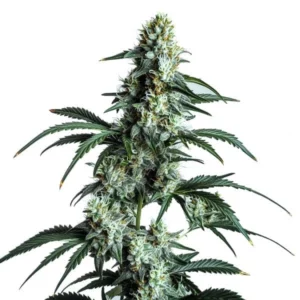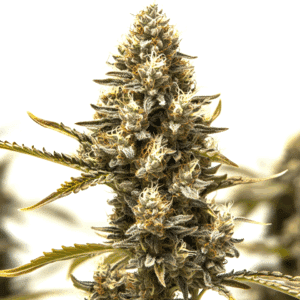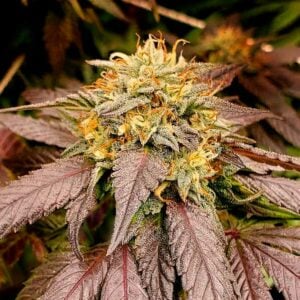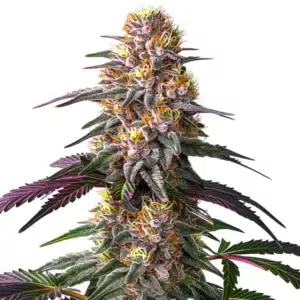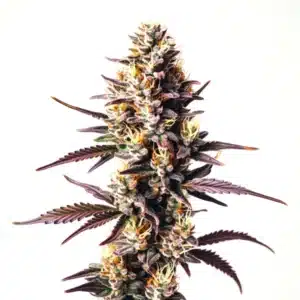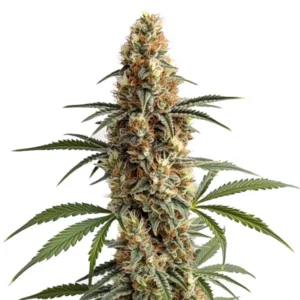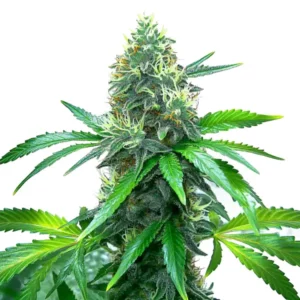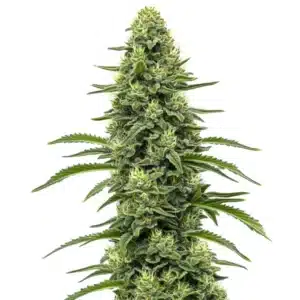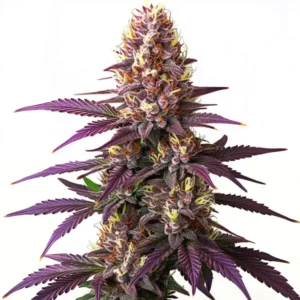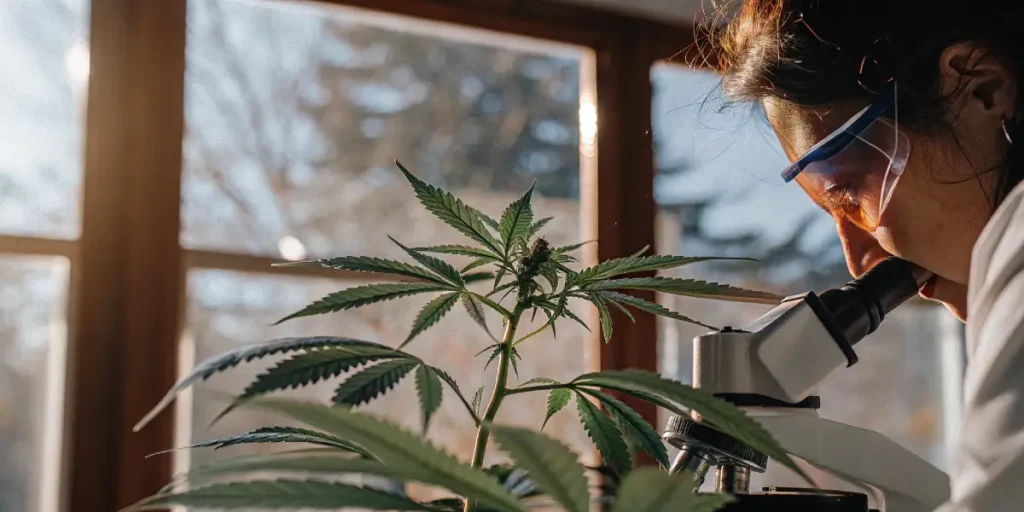
Nitrate Reductase and Cannabis Yield
Nitrate reductase, a vital enzyme, plays a crucial part in converting nitrate into nitrite in plants. This conversion is a key step in the nitrogen assimilation process. Nitrogen, being a major component of amino acids, proteins, and chlorophyll, directly influences cannabis plant growth. The efficiency of nitrate reductase impacts not only the health of your plants but also the yield of your cannabis crop.
For first-time growers, the term nitrate reductase might sound intimidating. Think of it as a helper enzyme that transforms nutrients into forms your cannabis plants can use. This transformation is essential for developing robust plants capable of producing dense, potent buds. The correlation between nitrate reductase and cannabis yield is evident in how well your plants can absorb and utilize nitrogen.
Recommended Strains
Sour Diesel
|
|
THC | 22% - 25% (Medium) |
|
|
Type | Feminized |
|
|
Yield | High |
|
|
Phenotype | 30% Indica / 70% Sativa |
GG4
|
|
THC | 27% (High) |
|
|
Type | Feminized |
|
|
Yield | High |
|
|
Phenotype | 40% Indica / 60% Sativa |
Experienced cultivators know the importance of enzyme activity in plant growth. By optimizing nitrate reductase, you can significantly enhance cannabis yield. This optimization involves ensuring the right conditions for the enzyme to work efficiently, like maintaining proper pH levels and providing adequate light. All these factors contribute to a thriving cannabis garden.
How Nitrate Reductase Affects Cannabis Yield
Nitrate reductase affects cannabis yield by determining how effectively your plants can use the available nitrogen. When nitrate reduction is optimized, plants can synthesize proteins and chlorophyll more efficiently. This synthesis leads to healthier growth and better energy conversion during photosynthesis, ultimately enhancing yield.
For example, if you’re growing the popular strain Gorilla Glue 4 from Blimburn Seeds, maximizing nitrate reductase activity could result in larger, stickier buds. This strain is known for its high resin production, and improving nutrient uptake can amplify these traits.
The nitrate reductase impact on cannabis plant growth cannot be overstated. As it facilitates the conversion of nitrates to forms usable by the plant, it ensures that the fundamental building blocks necessary for plant development are readily available. This translates to faster growth rates and the potential for increased harvests in terms of both quality and quantity.
Knowing how nitrate reductase affects cannabis yield can aid growers in fine-tuning their cultivation techniques. By monitoring enzyme activity and making necessary environmental adjustments, cultivators can achieve a harmonious balance that supports robust plant development, ultimately leading to successful harvests.
Promos & Deals
Optimizing Nitrate Reductase for Better Cannabis Yield
Optimizing nitrate reductase involves managing your grow environment. This includes ensuring your plants receive the right amount of light, as light conditions can affect enzyme activity. Adequate lighting boosts photosynthesis, which in turn supports nitrate reductase function.
Strains like Blue Dream thrive under optimized conditions. Providing these plants with a stable environment encourages active nitrate reductase, promoting vigorous growth and high yields. Consistency in your growing setup is key.
Successful optimization of nitrate reductase for better cannabis yield requires a comprehensive approach. Growers must consider all aspects of the growing environment, including soil quality, nutrient availability, and water management. By ensuring that each of these factors is in balance, nitrate reductase can function at its best.
Attention to detail in optimizing nitrate reductase for better cannabis yield can lead to significant improvements in plant health and productivity. Growers who invest time in understanding the specific needs of their plants will be rewarded with bountiful yields and high-quality buds that reflect the care given to the cultivation process.
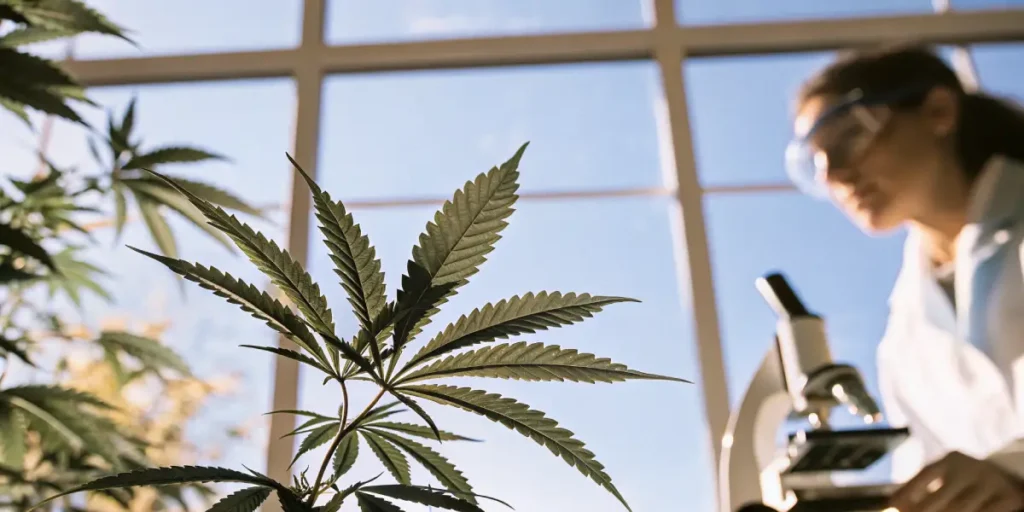
Nitrate Reductase Enzyme Activity in Cannabis Cultivation
The activity of nitrate reductase is directly influenced by several factors including temperature and pH. Maintaining a balanced pH ensures that the enzyme functions effectively. Most cannabis strains prefer a pH between 6.0 and 7.0, allowing nitrate reductase to operate at its peak.
Temperature also plays a role. Enzyme activity can decrease if it gets too hot or too cold. For instance, growing Sour Diesel in an environment outside its ideal temperature range may lead to suboptimal nitrate reduction, affecting yield.
Nitrate reductase enzyme activity in cannabis cultivation is a critical component that can determine the success of a grow operation. By regularly monitoring and adjusting environmental conditions, growers can ensure that enzyme activity is maintained at optimal levels throughout the growing cycle.
Besides to environmental factors, genetic differences among cannabis strains can influence nitrate reductase enzyme activity in cannabis cultivation. Some strains may naturally exhibit higher enzyme activity, making them more resilient and productive under various conditions. Identifying these characteristics can help growers select strains that align with their cultivation goals.
Practical Tips for Enhancing Nitrate Reductase Activity
To enhance nitrate reductase activity, focus on providing a balanced nutrient solution. Avoid over-fertilizing, which can lead to nutrient lockout and disrupt enzyme function. Instead, feed your plants incrementally, allowing them to adjust and optimize their nutrient uptake.
- Maintain a consistent watering schedule.
- Ensure adequate airflow in your grow space.
- Regularly check and adjust pH levels.
- Keep temperature within optimal range for your cannabis strain.
- Use high-quality, balanced fertilizers.
Another practical tip for enhancing nitrate reductase activity is to utilize organic amendments that promote soil health. Healthy soil can improve the uptake of nutrients and support the overall enzyme activity, which in turn positively impacts nitrate reductase and cannabis yield.
Growers should also consider the benefits of regular soil testing to tailor their nutrient management strategies effectively. By knowing the specific needs of their plants, they can make precise adjustments to enhance nitrate reductase activity, leading to healthier plants and more abundant harvests.
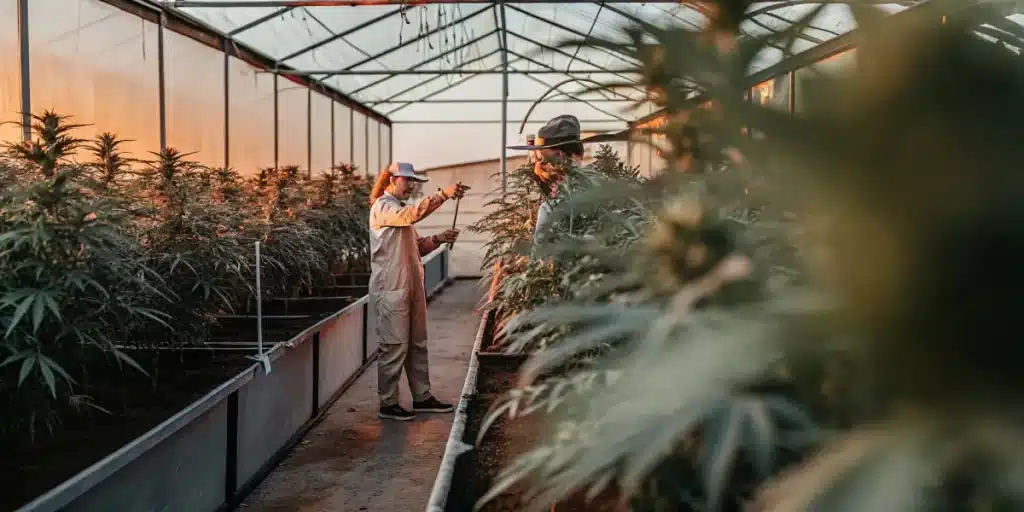
FAQs
What is the impact of nitrate reductase on cannabis plant growth?
Nitrate reductase plays a pivotal role in converting nitrate into usable forms of nitrogen, which are crucial for plant growth. This conversion process supports the formation of essential proteins and chlorophyll, directly influencing the overall health and vigor of cannabis plants.
Healthy plants are more resilient to stress and pests, and they can produce higher yields. By focusing on nitrate reductase activity, growers can ensure their cannabis plants have the resources they need to thrive, resulting in a more successful harvest.
The nitrate reductase impact on cannabis plant growth is evident in the overall vitality and resilience of the plants. When nitrate reductase functions optimally, plants are better equipped to withstand environmental stresses and achieve their full growth potential.
Continued research into the nitrate reductase impact on cannabis plant growth can provide new insights for growers looking to optimize their cultivation practices. By staying informed about the latest findings, cultivators can implement strategies that enhance enzyme activity and boost plant performance.
How can I optimize nitrate reductase for better cannabis yield?
To optimize nitrate reductase, provide a stable growing environment. This includes maintaining the right pH, providing sufficient light, and keeping temperatures within the optimal range for your specific cannabis strain. Consistency in these conditions ensures that the enzyme can function effectively.
Regularly monitoring these factors and making necessary adjustments can lead to significant improvements in cannabis yield. Using quality seeds, such as those from Blimburn Seeds, can also support better outcomes when conditions are optimized.
Optimizing nitrate reductase for better cannabis yield is a dynamic process that requires ongoing attention and adaptation. By being proactive and responsive to the needs of your plants, you can create an environment that fosters enzyme activity and supports robust growth.
Incorporating advanced growing techniques and technologies can further enhance your ability to optimize nitrate reductase for better cannabis yield. Automated systems for monitoring and adjusting environmental factors can ensure that plants receive the precise conditions needed for maximum productivity.
Is there a correlation between nitrate reductase and cannabis yield?
Yes, there is a strong correlation between nitrate reductase activity and cannabis yield. Enzymes like nitrate reductase enable plants to utilize nitrogen efficiently, which is fundamental for growth and bud development. Higher enzyme activity often leads to increased yields.
By focusing on optimizing enzyme activity, growers can improve their plants’ ability to absorb nutrients, leading to healthier growth and more abundant harvests. This correlation highlights the importance of managing growing conditions effectively.
The correlation between nitrate reductase and cannabis yield underscores the importance of enzyme management in cultivation practices. Growers who prioritize enzyme activity can achieve consistent and impressive results, maximizing the potential of their cannabis crops.
Recognizing the correlation between nitrate reductase and cannabis yield allows growers to make informed decisions about their cultivation strategies. By leveraging this knowledge, they can implement practices that enhance enzyme activity and support higher yields.
What strains benefit most from optimized nitrate reductase activity?
All cannabis strains benefit from optimized nitrate reductase activity, but high-yielding strains such as Gorilla Glue 4, Blue Dream, and Sour Diesel from Blimburn Seeds can particularly thrive. These strains have genetic traits that respond well to enhanced nutrient uptake.
Optimizing nitrate reductase in these strains can result in larger, more potent buds, making them ideal choices for growers looking to maximize their yield. By providing the right conditions, these plants can reach their full potential.
While all strains benefit from optimized nitrate reductase activity, those with demanding nutrient requirements or specific environmental needs may see the most significant improvements. Tailoring conditions to meet these needs can lead to exceptional growth and yield.
Knowing the unique characteristics of each strain can help growers determine how to best optimize nitrate reductase activity. By selecting strains with compatible traits and providing the ideal conditions, cultivators can achieve outstanding results.
How does nitrate reductase activity vary in different growing environments?
Nitrate reductase activity can vary depending on the growing environment. Factors such as light intensity, temperature, and nutrient availability all influence how well the enzyme performs. Indoor and outdoor grows may require different adjustments to optimize enzyme activity.
Indoor growers have more control over environmental factors, allowing for precise adjustments to optimize nitrate reductase. Outdoor growers need to adapt to changing conditions, which can impact enzyme activity and, consequently, yield. Knowing these variations is key to successful cannabis cultivation.
Environmental variability can present challenges in maintaining consistent nitrate reductase activity. Growers must be vigilant and adaptable, making informed decisions based on real-time observations and data to ensure optimal enzyme performance.
Experimentation and adaptation are crucial for knowing how nitrate reductase activity varies in different growing environments. By testing various approaches and learning from outcomes, growers can develop customized strategies that enhance enzyme activity and yield.


